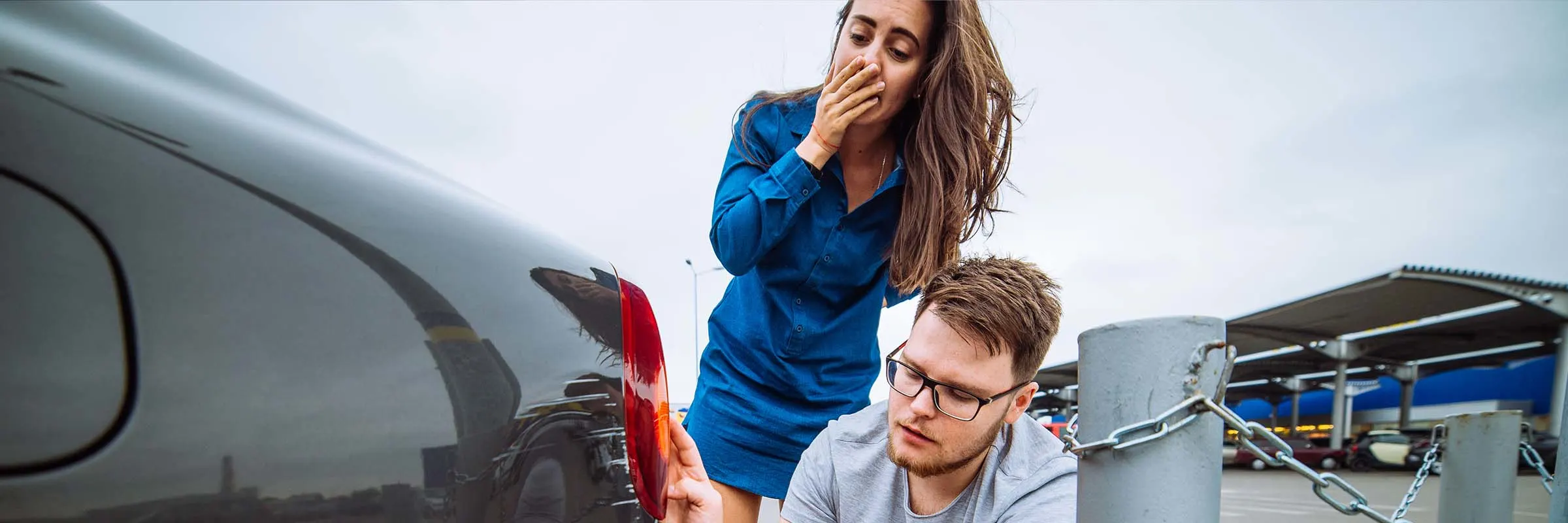You probably know that car insurance can help pay for car repairs or part replacements in the case of an accident or other damage. But what if your car gets totaled or stolen?
Your auto insurance may cover the cash value of your vehicle prior to the damage or loss, but it won’t necessarily cover the total outstanding balance of your lease or finance contract. This could leave you with a gap that can potentially translate into a hefty bill. With GAP, you can help protect yourself financially and boost your peace of mind.
What is GAP protection?
Guaranteed Asset Protection, or GAP, is a debt waiver product that helps protect a buyer or lessee in the case of total loss. Simply put, it helps bridge the gap between how much you owe for the vehicle and how much the car is worth if it is totaled or stolen.
This gap occurs because insurance typically pays the cash value of your vehicle at the time of loss. Because cars depreciate, it’s possible that your vehicle’s value will be less than what you still owe on your loan.
Do I need GAP coverage?
Unlike other forms of auto insurance, GAP is optional, add-on coverage that isn’t required. However, some lenders or lessors may require it as part of your auto loan or car lease.
GAP coverage is a good option for drivers who owe more on their car loan than the vehicle is worth, or will be worth, after depreciation. Accidents happen, and it’s important to keep in mind that if you have a total loss of your vehicle, your primary insurer’s settlement payment may not cover the entire amount you owe.
If your car is not financed, you don’t need GAP.
How to know if you already have GAP
GAP coverage may be automatically included in your terms if you have an auto loan or are leasing your vehicle from a dealer. It may also be included in your current auto insurance plan. Check your plan or call your insurance provider to confirm.
GAP coverage for new vs. used cars
Regardless of whether your vehicle is new or used, if you owe more on your vehicle than it is currently worth, GAP protection can be valuable in the event your car is totaled or stolen. Ally’s GAP coverage is available for both new and used cars at the time of financing.
Regardless of whether your vehicle is new or used, if you owe more on your vehicle than it is currently worth, GAP protection can be valuable in the event your car is totaled or stolen.
How GAP protection works on leased cars
GAP could be required if you lease your car, since your car’s value will depreciate over the length of your lease. Check your lease agreement for details. Even if it’s not mandatory, this type of insurance is frequently recommended for leasers, especially if you have a long lease term or made a low down payment.
Where do I get GAP coverage?
You’ll have a few options when it comes to purchasing GAP. If you’re buying a vehicle, you can typically include GAP coverage at the time you sign the lease or finance contract papers. You also may be able to get GAP through your auto insurance company, the lender that’s financing your vehicle or an independent GAP provider.
What Ally GAP protection covers
Ally’s GAP protection is an easy-to-navigate coverage option. Benefits include:
Availability on both new and used vehicles
Coverage for finance agreements up to 96 months
Coverage on the remaining net outstanding balance including a deductible up to $1,000 (where permitted by state law)
A full refund if cancelled within 60 days, provided no claims have been made (after 60 days, your refund will be prorated)
The ability to include the plan cost in your monthly vehicle payment
Ask your dealer for more details.
Decide on the types of vehicle protection you need
While you make choices about your car’s safety features, techy add-ons and seat comfort, you also need to decide on the right protection for your finances and your vehicle. Learn more about GAP coverage and other vehicle protection options from Ally so you can drive off the lot feeling safe and secure.



